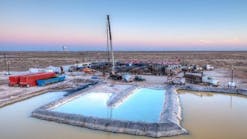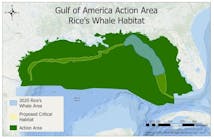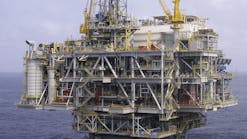John L. Kennedy
Editor
Austria's state oil company, OMV AG, had a difficult year in 1993.
Operating losses are estimated at about $80 million, and the company will take a $300 million extraordinary charge for restructuring, bringing total loss for the year to about $380 million.
But Chairman and Chief Executive Officer Dr. Richard Schenz told Oil & Gas Journal in Vienna he is optimistic 1994 will be a breakeven year.
"Restructuring will solve a lot of problems," Schenz said.
A SHIFT IN EMPHASIS
Part of OMV's restructuring strategy is to shift away from the chemical and petrochemical business and strengthen the "integrated oil business."
Chemical and petrochemical production accounted for about 20% of the OMV group's $7 billion in revenue last year, and weakness in that market was largely responsible for 1993's operating losses. As part of the restructuring strategy, Schenz wants to reduce the share of revenues contributed by this segment to 10% from 20% within the next 3 years.
The new political situation in Central Europe has hurt the fertilizer business, for example, and competition from eastern Europe in the chemical business is growing, Schenz sails.
To begin to reduce exposure in these markets, OMV has closed some fertilizer production lines. It wants to sell parts of its fine chemicals business and merge its plastics and petrochemical business with a West European company.
Schenz said, "Some negotiations are in the early stages, but no merger agreements have been reached."
As exposure in the chemical and petrochemical business is reduced, OMV's plan is to strengthen upstream and expand its marketing operation.
"We might have started a little late to go international," says Schenz of OMV's exploration and production business. But capital spending on this segment will be boosted above cash flow as development of this business segment is emphasized.
"The E&P focus is still in Austria," Schenz said. "We still believe there is oil in Austria."
But several key areas abroad will get attention in the next few years as well. Libya, where OMV took over Occidental's operation, and the North Sea are important areas. In Pakistan, OMV found what appears to be a big gas field. Its extent should be known by autumn when appraisal drilling is complete.
OMV also has operations in Yemen, Viet Nam, and the Black Sea area.
The company's current oil production is 2 million tons/year, or about 25% of the crude needed to feed OMV refineries. OMV's Austrian oil production is about 1 million tons/Year. Schenz wants to significantly increase the share of OMV's refinery needs that is supplied by its own crude production.
About $60 million is earmarked for E&P capital spending this year.
The same amount is planned for investing in a stronger marketing operation. As long as the Iron Curtain was in place until 1990 it was difficult for OMV to expand marketing to the east. Since 1990, it has been investing in neighboring countries and plans to continue this emphasis on marketing. OMV is particularly active in the Czech and Slovak republics and in Hungary.
"But going international in marketing means Central Europe," Schenz said. "We have no plans to extend, for example, into western Europe or Russia.
REFINING STRATEGY
With a modern, high conversion refinery at Schwechat producing products that meet tough environmental specifications, OMV has much of its upgrading investment behind it.
But it is interested in expanding refining capacity and hopes to purchase the 30% of the Slovnaft refinery at Bratislava that is being offered by, the Slovak republic as part of its privatization plan.
"It would be an important step in developing a strategic refinery network," Schenz said. "It and our Schwechat plant could effectively be combined into one refining and petrochemical center that would play a significant role in Central Europe.
Only 50 km apart, the two plants could be linked with crude and products pipelines and run essentially as one plant. Costs could be reduced by taking advantage of synergies, and common investments could be made.
For instance, Schenz says, one big resid conversion unit, rather than two smaller units, could be built to serve both refineries. This is not a project that needs to be done in the next 5 years, but by 2000 Schwechat probably will need new resid conversion capacity,.
"Building a unit to serve both these refineries would be a practical solution for the bottom of the barrel," Schenz said.
The Bratislava refinery is a mixture of modern units and well maintained older units. Upgrading is needed to meet octane demands, but the plant has a modem desulfurizing unit and a new hydrocracker.
Negotiations are continuing to allow OMV to participate in the Bratislava plant. "The main issue left to resolve is price," Schenz said. "I hope for a decision in the first half of this year. But my previous predictions have not been accurate."
OMV also operates the Burghausen refinery in Bavaria. Formerly owned by Marathon, its 70,000 b/d capacity is devoted mainly to producing petrochemical feedstocks ethylene and propylene as well as light fuel oil, diesel, and jet fuel.
Schwechat is mainly a motor fuels plant, but it also produces about 350,000 tons/year of ethylene from its steam cracker.
Both are tied to the Adriatic Sea by pipeline.
Schwechat supplies about 75% of Austria's petroleum product demand. Product imports make up the rest.
In addition to processing its own crude, OMV has processing agreements at Schwechat with Agip, BP, Exxon, Shell, and Mobil.
Schwechat can produce gasoline and diesel that meet strict environmental specifications. In Austria, gasoline must be lead free, and the maximum sulfur content in diesel is 0.15%. At the end of 1995, that maximum will be cut to 0.05%.
OMV is also a large importer of Russian natural gas about 5 billion cu m last year. "Russia is a natural partner for Europe," Schenz said. Still, in view of political uncertainties in Russia and trade problems among republics of the former Soviet Union, OMV increased its gas storage capacity significantly in 1992. Capacity now stands about 2.5 billion cu m, or 40% of annual demand.
Plans call for doubling the volume of gas storage in the next 10 years.
CONTINUED RESTRUCTURING
In addition to major shifts in business strategy, OMV has embarked on an intensive cost cutting program. It has reduced investments to less than cash flow, and it has cut its work force by 20% to 11,000 persons in the last 18 months.
Schenz said, "These efforts will continue in a very dynamic manner, along with special projects to reduce the complexity of the company and outsource services where it is appropriate."
The state owns 72% of OMV's shares.


